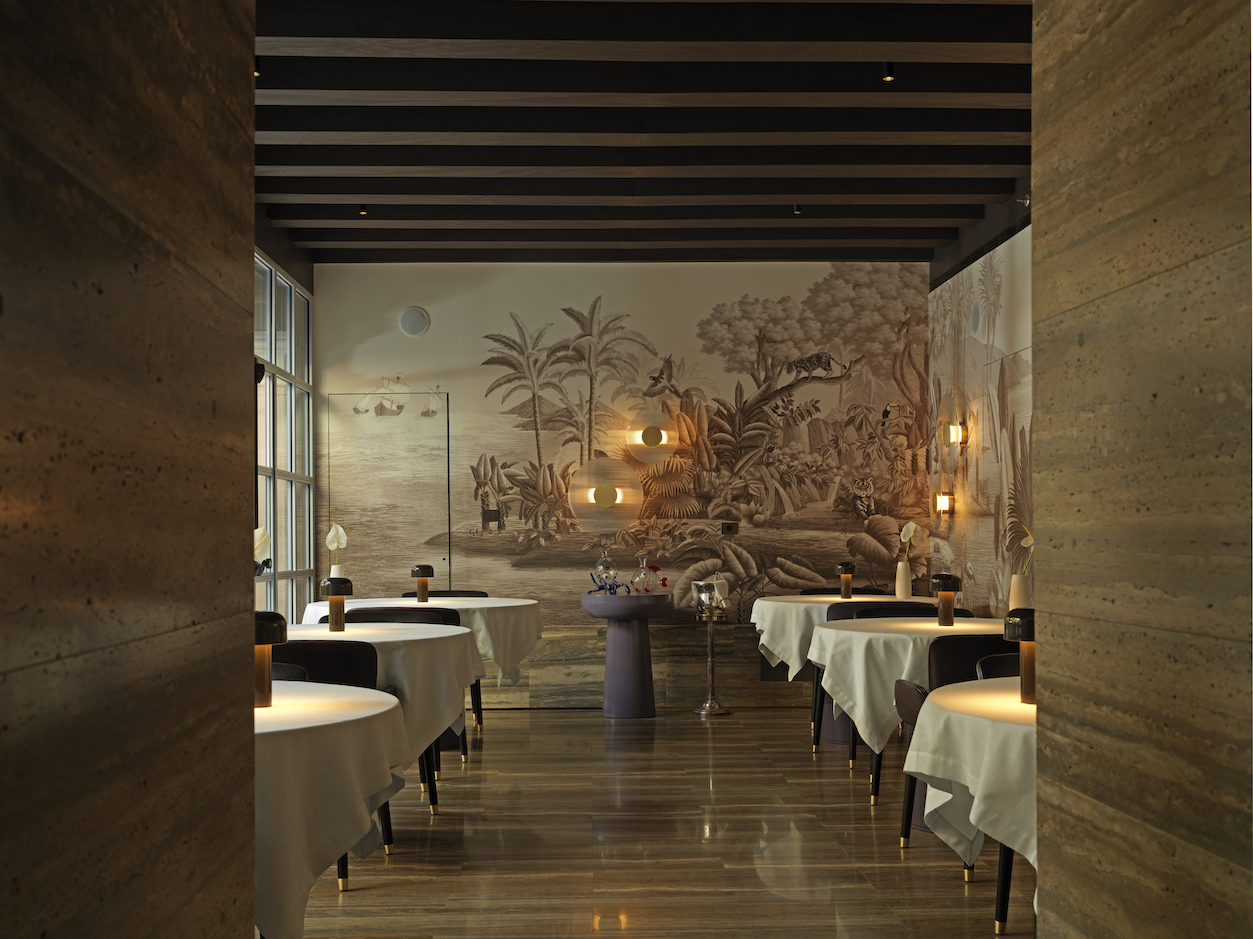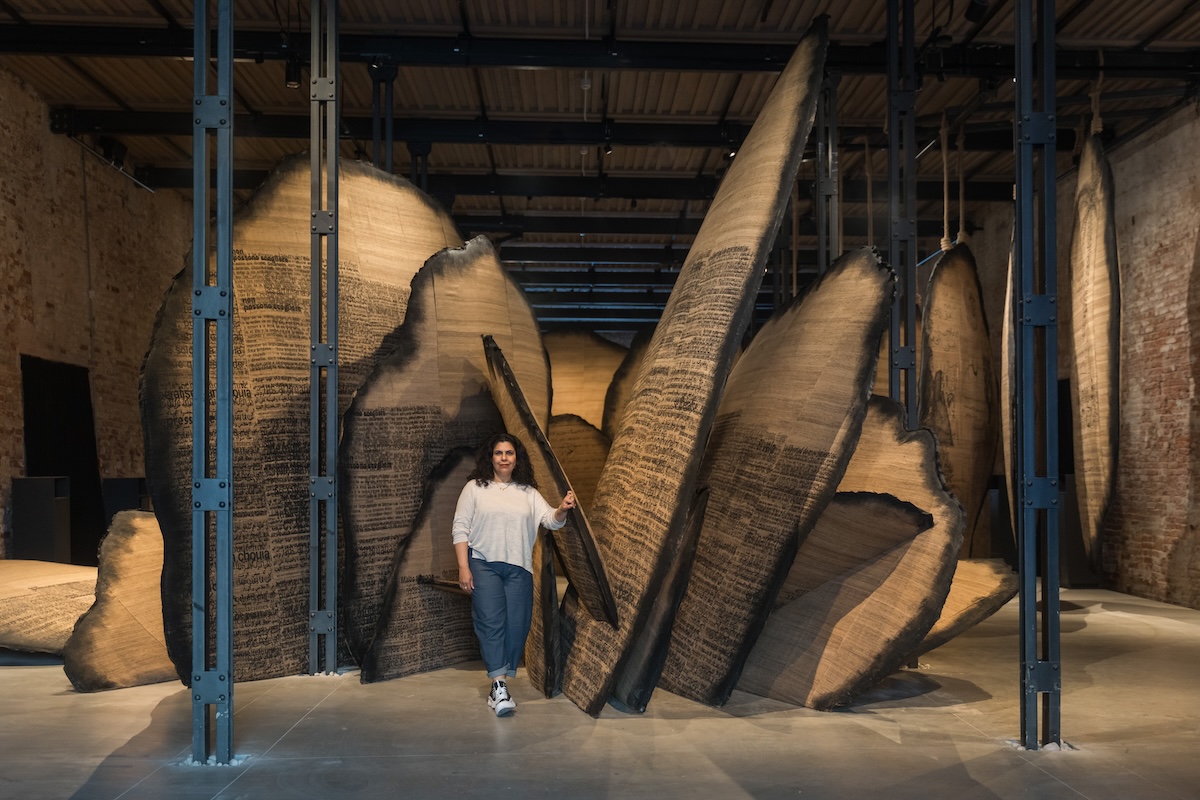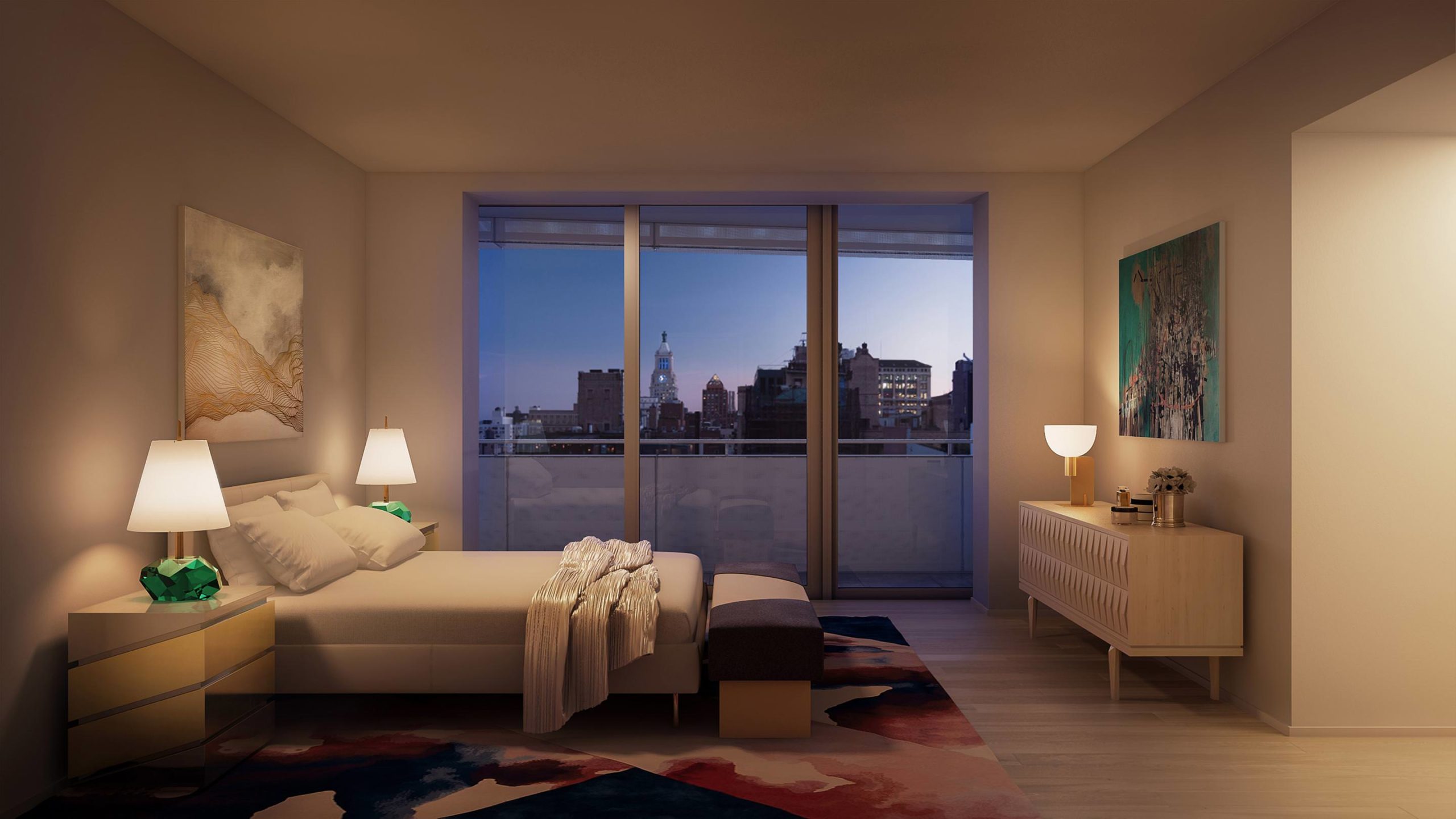In 1989 Rem Koolhaas and Reinier de Graaf co-founded AMO, a design and research branch of his architectural studio OMA. As a reaction to the changing environment of architecture, AMO was a think tank of sorts. Today, it addresses questions and issues that extend beyond architecture, highlighting the research that goes into projects and planning. Expressed in a more creative landscape, AMO engages with leaders in tech, music, science, fashion, politics, and the arts to present exhibitions, fashion shows, publications, product design, and more.
Whitewall spoke with Samir Bantal, the creative director of AMO, to hear about how its latest exhibition, “Countryside, The Future” at the Guggenheim (which closed just a few weeks after opening) foreshadows life off the grid.
 Keiichi Tanaami, “Good-by Elvis and USA”, Videostill, 197, © Keiichi Tanaami + Galerie Gebr. Lehmann, Dresden / Staatliche Museen zu Berlin, Nationalgalerie / 2010 erworben durch die Stiftung des Vereins der Freunde der Nationalgalerie für zeitgenössische Kunst
Keiichi Tanaami, “Good-by Elvis and USA”, Videostill, 197, © Keiichi Tanaami + Galerie Gebr. Lehmann, Dresden / Staatliche Museen zu Berlin, Nationalgalerie / 2010 erworben durch die Stiftung des Vereins der Freunde der Nationalgalerie für zeitgenössische Kunst
WHITEWALL: “Countryside, The Future” is the largest exhibition you’ve worked on at AMO to date. Why was this idea important for the exhibition?
SAMIR BANTAL: As we are in the COVID-19 crisis, we never anticipated that something would unravel right now, but I think this actually shows how relevant it is that we as mankind or humanity stay connected to our environment—whether it’s the built environment or the rural environment, the countryside.
 Korakrit Arunanondchai, “With history in a room filled with people with funny names 4”, 2017, video, 23:32 min, © Korakrit Arunanondchai, courtesy the artist, Carlos / Ishikawa, London; Clearing, NewYork; Bangkok CityCity Gallery, Bangkok
Korakrit Arunanondchai, “With history in a room filled with people with funny names 4”, 2017, video, 23:32 min, © Korakrit Arunanondchai, courtesy the artist, Carlos / Ishikawa, London; Clearing, NewYork; Bangkok CityCity Gallery, Bangkok
We were triggered by a statement by the United Nations that 50 percent of humanity was living in a city, and it was increasingly becoming more urban. So, in about 20 or 30 years from now, 80 percent would be living in cities. It’s an unsustainable future. You cannot house the whole of humanity in a city in the way that we are currently designing our cities and organizing the countryside, with all the implications.
We started out with a number of questions of what happens if 80 or 90 percent of mankind lives in cities. What are they leaving behind? Why are they leaving this behind? What is happening to this large area? And what if only 10 percent of mankind still lives in this area? Is that an enormous burden on their shoulders of sustaining life in the city? That’s basically what’s happening already.
 Nam June Paik, “I Never Read Wittgenstein (I Never Understood Wittgenstein)”, 1997; © © Nam June Paik Estate / Staatliche Museen zu Berlin, Nationalgalerie / 2013 erworben durch die Freunde der Nationalgalerie / Thomas Bruns, courtesy of Hamburger Bahnof.
Nam June Paik, “I Never Read Wittgenstein (I Never Understood Wittgenstein)”, 1997; © © Nam June Paik Estate / Staatliche Museen zu Berlin, Nationalgalerie / 2013 erworben durch die Freunde der Nationalgalerie / Thomas Bruns, courtesy of Hamburger Bahnof.
WW: What did your research find?
SB: The way we are living in our cities can only happen if the countryside is organized and structured in a way that is unprecedented. Agriculture, energy, the way that we create our food, and even where we store our data.
We felt there was an increasing importance to know what is happening in the countryside and become a participant in that discussion rather than just an observer. We looked at a number of issues and global regions and identified a number of key perspectives. One was a historic perspective of the countryside—the idea that big cities in ancient times had a very developed and interesting notion of what the countryside was.
Today, that’s seen in the form of tourism, mass tourism, but it’s completely stripped from almost any self-developing form. It’s almost flattened out to a yoga resort—the kind of commodification of your free time.
This historic perspective spirals on to a more political perspective, showing how the countryside and political leaders have always used the countryside as kind of agent of modernization for large-scale planning. Sometimes they were already trying to deal with things like climate change, but often unsuccessful because it was a very “top-down” type of planning. It showed that the power of the countryside was always part of politics. We saw people used the countryside as a kind of strategy to keep others from massively moving to the city by providing them a viable kind of future.
WW: What are your current thoughts on the future of sustainability within architecture?
SB: The signs are already there. There needs to be an international effort in tackling these things, and, as architects, we have our own responsibilities. The pretext of these statistics said that the future will be urban, but is the future only urban because we have never proven an alternative? Shouldn’t we investigate a more viable and sustainable alternative without simply jumping to something that was very much hyped, or is still, like the “smart city”? This kind of merger between capitalism and technology will not make everything better and make us forget. Everything is digital and happening in the cloud, but the consequences and the reactions of that are not in the cloud. These things are physically around us.
The idea that this is safe and sustainable is a myth. As architects, we have a responsibility to at least become part of the discussion about the “smart city.” What we tried to point out in the exhibition is that we added the countryside into this equation. The city is an ecosystem in itself. It always is connected to the countryside in one way or another. Often, the countryside supplies what the city needs, so by only focusing on the city and where people move to, we’re ignoring the part that is maybe more important for our survival. We’re putting this on the agenda, not specifically for architecture, but more to create a cross-disciplinary discussion. We tried to investigate what that means.
WW: Where do you feel the future of architecture is?
SB: If you’re asking for a location, it’s the countryside. It’s part of our study to actually prove that there is still a lot untapped there—not only for architects to look beyond the city, but for a lot of people, like creatives or people in politics or economy, to look at the countryside and what the countryside is currently going through, and how the countryside is currently developing. This is where we have to develop a solution for energy and for food. This is also the area that is more visibly affected by climate change. I’m hopeful that technology will actually help us to get closer to nature.
WW: How has the pandemic impacted the way you see your practice?
SB: I think this time is a moment of reflection as an architect designer, but also for mankind. Why is this happening? We see how vulnerable our modern lives are in these contexts. You start to also appreciate the more important things.











